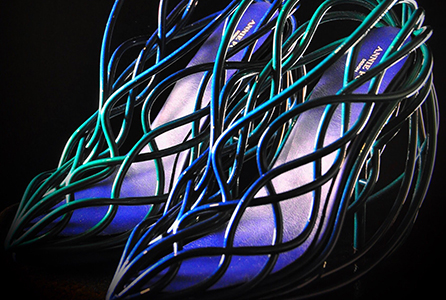The report shows that whilst the entire 3D printed wearables market is set to maintain a steady course, 3D printed footwear is predicted to remain the most popular category in terms of sales – accounting for one-fourth of the market share.
As 3D printing allows manufacturers to produce prototypes and capitalise on personalisation and bespoke designs, it can be argued that the high initial cost of the equipment is balanced out by the long-term low cost and convenience.
The report reads: “The study finds that 3D printed wearable manufacturers will benefit from a new solution that features mixed material printing. Key players in the market are partnering with engineers, mathematicians and architects and creating high-end 3D printed wearables for the future, which features added functionalities and improved accessibility to a wider array of data.

People are looking for unique and bespoke pieces that are on trend, affordable and sustainable, which is what I’m trying to do”
“As more wearable manufacturers turn to 3D printing for accelerated production and waste reduction, gains in the market are expected to surge at a significant pace in the foreseeable future.”
One London designer is using 3D print to create bespoke footwear with the added benefit of reducing the impact fashion has on the environment.
Annie Foo’s work marries traditional shoe-making techniques with new and innovative technologies to push the boundaries of fashion design and manufacture.
By using 3D scanning technology, Foo is able to take a copy of each customer’s body and create customised pieces on demand, to an exact fit.

Foo used a HP 4200 Multi Jet Fusion 3D printer to create the shoes
Working closely with Europac3D, Foo used a HP 4200 Multi Jet Fusion 3D printer and a PA12 Nylon material to create her first collection of 3D printed shoes.
The shoes took only three hours to create with the raw material costing the same as high street shoes.
Foo comments: “3D printing is growing rapidly, especially in the fashion industry. People are looking for unique and bespoke pieces that are on trend, affordable and sustainable, which is what I’m trying to do. The world doesn’t need more shoes, but it deserves innovation.”
Looking to the future, the study predicts Europe and North America will remain lucrative markets for 3D printed wearables, accounting for 70% of market shares.
If you have any news, please email carys@linkpublishing.co.uk or join in with the conversation on Twitter and LinkedIn.